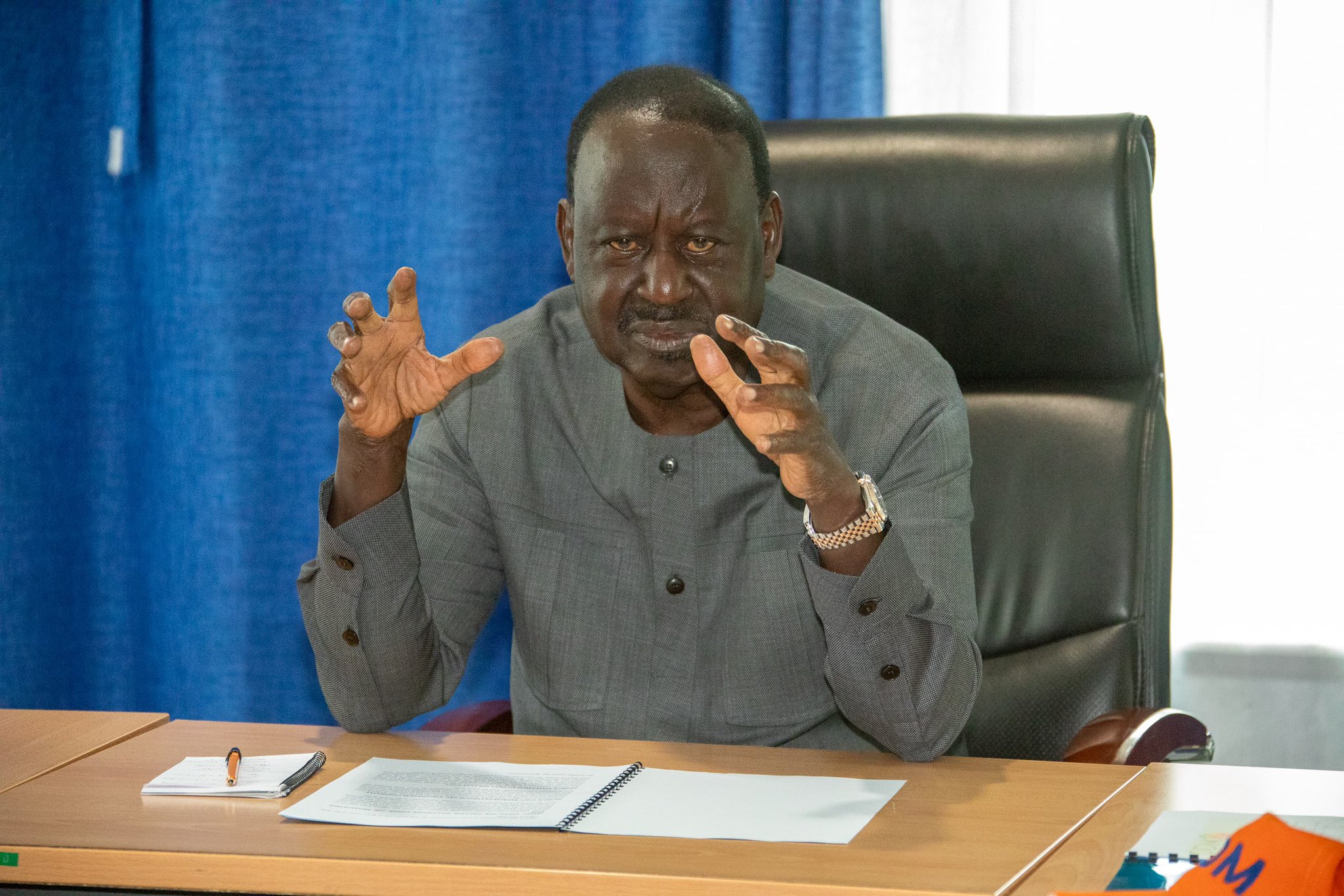
Saba was a movement, not a riot » Capital News
NAIROBI, Kenya, Jul 7 – Opposition leader Raila Odinga has faulted the marking of the 35th anniversary of Saba Saba through street demondrations challenging Gen Z to embrace civic egagement.
Addressing a press conference on Monday following the cancellation of a planned rally at Kamkunji Grounds—disrupted by heavy police presence and road barricades—Odinga stated that the significance of Saba Saba lies not in protests but in the symbolism and legacy of Kamkunji.
“The Saba Saba commemoration is at Kamkunji Grounds, not on the streets. That is where it started, and that is where it belongs,” Odinga said.
Odinga warned against reinterpreting Saba Saba as a symbol of unstructured resistance.
He emphasized that Kamkunji Grounds holds deep historical significance, having hosted major political events including the last KAU rally in 1952, the first KANU rally, and later the founding meetings of the Forum for the Restoration of Democracy (FORD).
The former Prime Minister proposed the formation of a national, intergenerational conclave to discuss the country’s political and governance challenges.
‘Conclave’
He said the forum should develop actionable reforms on youth employment, governance accountability, transparency, and police-citizen relations.
“I propose that the conclave envisaged comes up with better and sustainable ways of addressing transparency, accountability, and impunity—especially with regard to corruption—and ensuring that leaders are held accountable for their actions,” Odinga noted.
He revisited the events of 1990, when he, alongside Charles Rubia, Kenneth Matiba, Gitobu Imanyara, and others, called for a rally at Kamkunji Grounds to demand the repeal of Section 2A of the Constitution and the return of multiparty politics.
The KANU regime, led by the late President Daniel arap Moi, responded with arrests, detentions, and violent crackdowns.
Recalling the repression, Odinga said that when Kenyans attempted to gather at Kamkunji Grounds on July 7, 1990, many sustained injuries and others died during confrontations with the police.
However, the date would later mark a critical turning point in the country’s democratic evolution.
“Saba Saba was about political freedom, constitutional reform, and the fight for a multiparty system. It was convened with a clear agenda and by leaders whose identities were known,” he said.
He noted that it took nearly 18 months after the first rally attempt for the state to lift the ban on political pluralism.
On December 2, 1991, President Moi announced the repeal of Section 2A, restoring multiparty democracy.
“We must return to a structured agenda for comprehensive reforms,” he said.
Odinga criticized the Kenyan police for continuing to operate as a colonial-style force, citing persistent reports of excessive force and lack of accountability.
He called for a reimagining of law enforcement as a service institution.
“The name changed from police force to police service, but the behaviour has not,” he said.
‘Revisionists’
He also accused some current political actors of attempting to rewrite history by positioning themselves as liberators, despite having supported the KANU government during the era of suppression.
“We must not allow revisionism. The history of Saba Saba is clear. It was led by Matiba, Rubia, and myself, among others. The goals were specific, and the methods were constitutional,” he said.
The former Prime Minister emphasized that while youth discontent is valid, he urged the youth to channel their concerns through lawful and strategic platforms to ensure lasting reform.
“The question we have to ask ourselves is, where do we go from here? Do we embrace chaos or a coming together of minds and country?” he posed.
“As a living architect of the events leading to Saba Saba, I choose a coming together of minds and country in the interest of the nation. I long for its progress, stability, and prosperity,” Odinga stated.